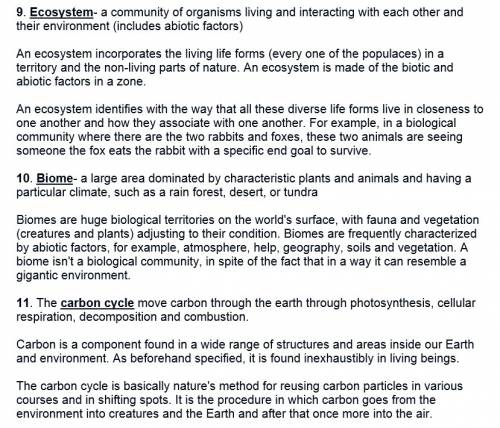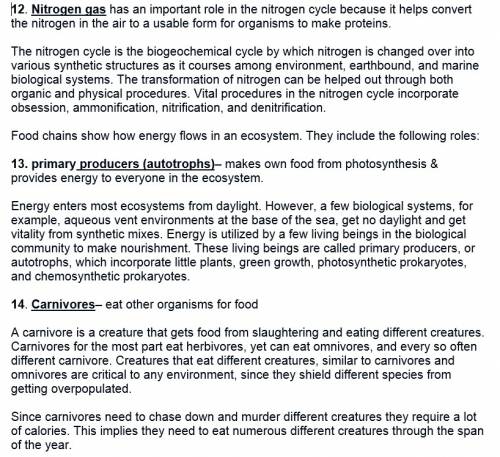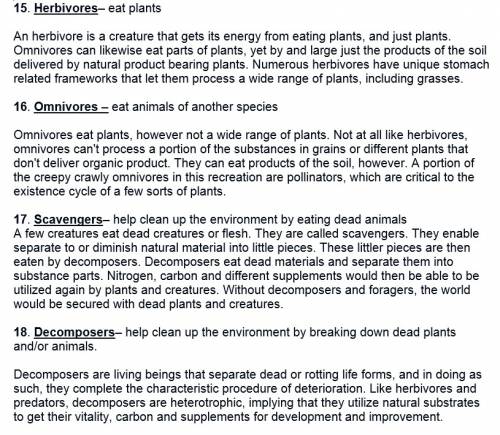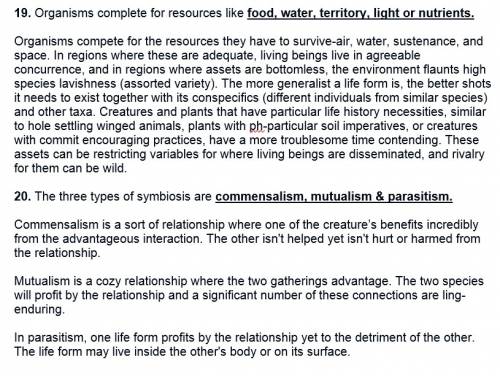
Physics, 17.10.2019 19:30 sbender2901
Is the tendency of an organism to regulate its internal conditions to maintain good health. it is an essential characteristic that is shared by all organisms. when you are cold & when you are hot are examples of homeostasis. the basic needs of life are: – to dissolve needed substances or – for respiration or photosynthesis – to provide energy – shelter, temperature & space – a change in the environment that causes an organism to change its activity some changes take place inside an organism, which is called internal stimuli. & are examples.) others take place outside an organism; this is called external stimuli. & examples.) – the way an organism reacts to the stimulus (sneezes, moves, runs away, etc.) = living things (plants, animals, fungi, etc.) and = non-living things (rocks, water, temperature, levels of ecological organization - a group of individuals of the same species that exist together at a given place and time - all of the populations living and interacting within a specific environment - a community of organisms living and interacting with each other and their environment (includes abiotic factors) a large area dominated by characteristic plants and animals and having a particular climate, such as a rain forest, desert, or tundra the move carbon through the earth through photosynthesis, cellular respiration, decomposition and combustion. has an important role in the nitrogen cycle because it convert the nitrogen in the air to a usable form for organisms to make proteins. food chains show how energy flows in an ecosystem. they include the following roles: – makes own food from photosynthesis & provides energy to everyone in the ecosystem. – eat other organisms for food – eat plants – eat animals of another species – clean up the environment by eating dead animals – clean up the environment by breaking down dead plants and/or animals organisms complete for resources likeor the three types of symbiosis are &

Answers: 2
Another question on Physics

Physics, 22.06.2019 13:00
The magnitude of the amount of energy released by burning a fuel source, measured in energy per unit mass, is called its fuel value. note that the fuel value is the negative of the isobaric specific heat of combustion for the fuel. if all the energy obtained from burning 1.23 pounds of butane with a fuel value of 10.85 kcal/g is used to heat 128.0 kg of water at an initial temperature of 18.3 °c, what is the final temperature? note that 1 lb = 453.6 g.
Answers: 3

Physics, 22.06.2019 16:30
Iron is a transition metal with multiple oxidation numbers. (answer the following) a. what is the iron (ii) ion? how does it differ from the iron (iii) ion? b. if iron were to bond with oxygen, predict the formula for each oxidation number of iron. c. how would each formula be named?
Answers: 2

Physics, 22.06.2019 16:30
In a hydrogen molecule there are a total of four charges, 2 protons in the two nuclei, and 2 electrons. how many unique charge-pairs are there (without double counting)?
Answers: 3

Physics, 23.06.2019 02:30
Five renewable energy resources are wind, sunlight, moving water and geothermal energy. question 2 options: true false
Answers: 2
You know the right answer?
Is the tendency of an organism to regulate its internal conditions to maintain good health. it is an...
Questions









History, 04.05.2021 06:50

Mathematics, 04.05.2021 06:50

Geography, 04.05.2021 06:50

Mathematics, 04.05.2021 06:50


Mathematics, 04.05.2021 06:50




History, 04.05.2021 06:50








